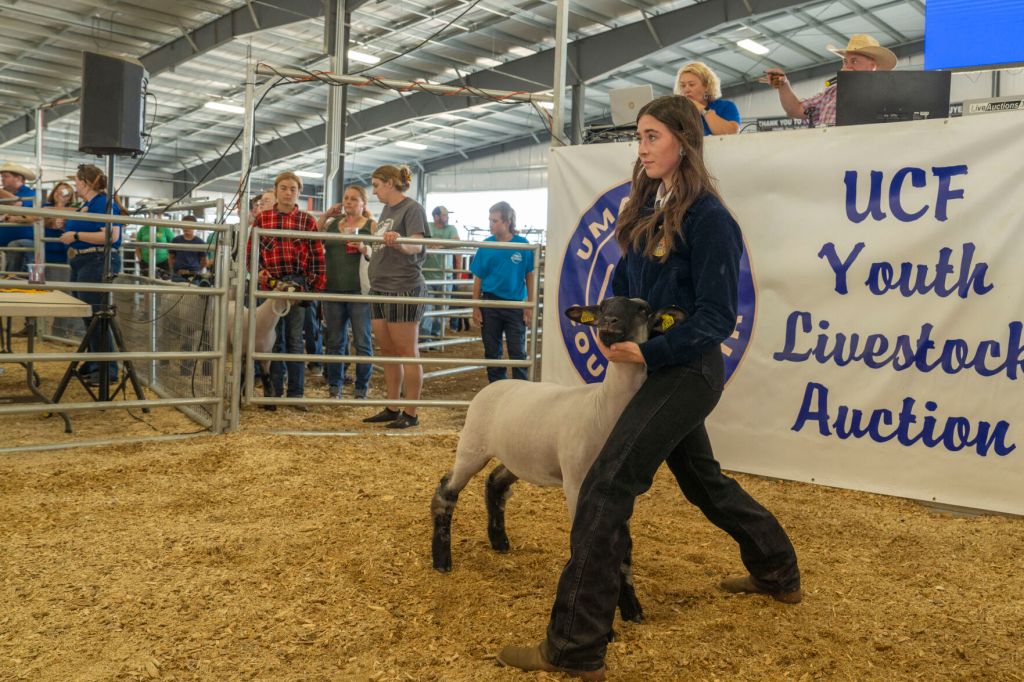Local youths, their animals take the spotlight at Umatilla County Fair auction
Published 9:00 pm Tuesday, July 22, 2025

- Jacee James presents her lamb Aug. 10, 2024, during the Umatilla County Fair youth livestock auction in Hermiston. The lamb, Ziggy, sold for $15.50 per pound.
Aug. 9 sale is culmination of youths’ efforts, provides financial support for their futures
HERMISTON — The Umatilla County Fair’s Youth Livestock Auction returns to the fair Aug. 9 after record-breaking sales in 2024.
The auction — always on the fair’s final day — is where youth participants in Future Farmers of America and 4-H show a variety of livestock and other animals for auction. The auction is the fair’s major event for youth participants. The county fair’s website calls it “one of the most important events at the Umatilla County Fair.”
A record-breaking auction
Last year, the Youth Livestock Auction had approximately $1.50 million in total sales — a nearly 11% increase from 2023.
Umatilla County Board of Commissioners Vice Chair Dan Dorran, a former county fair board member whose connection to the fair goes back more than 54 years, said the record-breaking amount of money raised last year “shows a lot” about the community’s support of youth.
Umatilla County is one of “most giving areas that you’ve ever seen,” Dorran said.
Hermiston High School agriculture teacher and FFA adviser Sandy McKay, who has about 30 of his students participating in the livestock auction this year, echoed a similar sentiment.
“It is surprising … every year it seems like it tops the previous year, sets a new record,” McKay said.
The auction is “ingrained into the fabric of our community,” he added.
Months of preparation
McKay said the livestock auction is the culmination of the year for most students in FFA. He said that it is by far the biggest stock show that his students compete at.
Preparation for the auction begins well in advance of fair week. Smaller animals, such as rabbits, chickens, guinea pigs and turkeys, require around three to four months of care and feeding, McKay said. Larger animals, such as a steer, by contrast, take around 10 months, he said.
The students have to ensure their animals have food and water every day and shade on hot days, McKay said.
Beyond the fair’s auction, McKay said some students undertake multi-year breeding projects that may span their entire high school careers.
While raising livestock may be the most visible aspect of the auction, students also are getting practical business experience. McKay noted youth learn the financial side of agriculture as they budget expenses and calculate the profitability of their projects.
Financial opportunity for youth
Trending
For some youth, the financial rewards can be significant.
McKay said the average steer sold at around $6.63 a pound last year — roughly double what a similar animal might cost at a commercial livestock sale. With steers typically sold at auction weighing around 1,400 to 1,500 pounds, that means some youth could take home more than nearly $10,000 in some cases.
McKay said most youth put the money they earn toward next year’s auction animal and saving for college. If they are not planning to attend college, McKay said, they put the money earned toward savings or a vehicle.
McKay said the money youth earn from the auction helps them when they graduate from high school and go out on their own.
The money they earn at the auction, he said, means “They’re not starting from nothing.”








